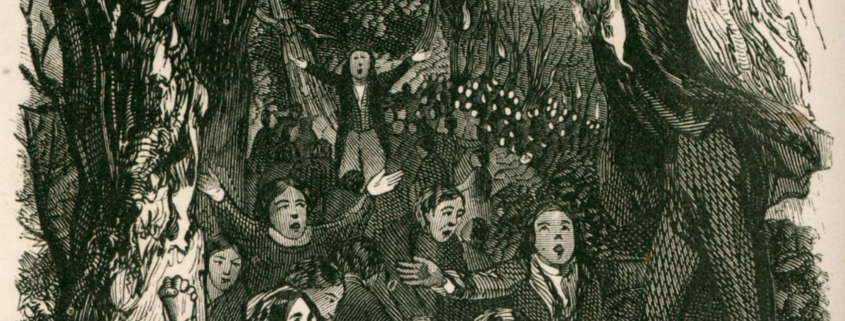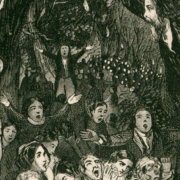A History of the Jerks: Bodily Exercises and the Great Revival
Douglas Winiarski: Of the various somatic religious exercises that spread across the trans-Appalachian frontier and southern backcountry during the Great Revival, none drew more astonished commentary or more virulent opposition than “the jerks”: involuntary convulsions in which the subjects’ heads lashed violently backward and forward. More than half a century before the derisive phrase holy roller was coined to describe the ecstatic worship practices of Holiness and Pentecostal evangelicals in Appalachia, the subjects of these extraordinary bodily fits were known as “Jerkers.” Sometimes these spasmodic “shuddering” gesticulations of neck and head “operated like the hickups.” Other accounts described jerkers bouncing from “place to place like a foot-ball” or thrashing like a “fish, when thrown out of the water.” The “wondrous quickness” with which their necks pivoted back and forth reminded one observer of a “flail in the hands of a thresher.” The jerks purportedly struck riders on horseback, men plowing in the fields, boys at their school desks, young girls drinking tea, families at supper, people in bed, musicians at play, and nursing mothers. They erupted without warning and without regard to age, class, gender, or physical constitution. Pious saints and notorious sinners were “taken,” “seized,” or “attacked” by the jerks, which were often propagated from person to person like a “sympathetic contagion.” Witnesses recounted stories of the jerkers’ preternatural strength: diminutive women hurling 200-pound men to the ground; floundering men leaving imprints of their knuckles on the massive timber walls of pioneer log churches. Samuel Doak’s congregants near Jonesborough, Tennessee, even cut saplings in the woods surrounding their meetinghouse for use as “jerking-posts” to steady the afflicted.



